Shardlow Part 03 - ... And Back Again
w/e 16 August 2015
All of this week's pictures were
taken with a Kodak DX6490

Part 02 saw us walking from Wilne Bridge to the Trent
and Mersey's Canal's entry into the River Trent at its confluence
with the River Derwent. This part sees the same route but in
the opposite direction back to Wilne Bridge but looking at several
things we missed on the outward leg.
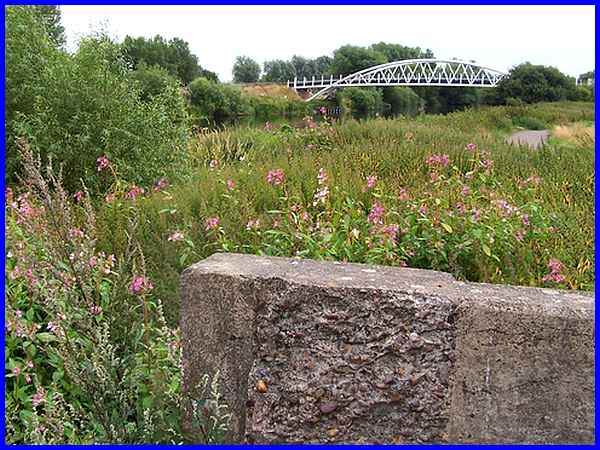
We ended Part 02 at the remains of Long Horse Bridge looking
north into the mouth of the Derwent but in the opposite direction
over more of the bridge foundations the new bridge over the Trent
is visible about 100 yards upstream.
|
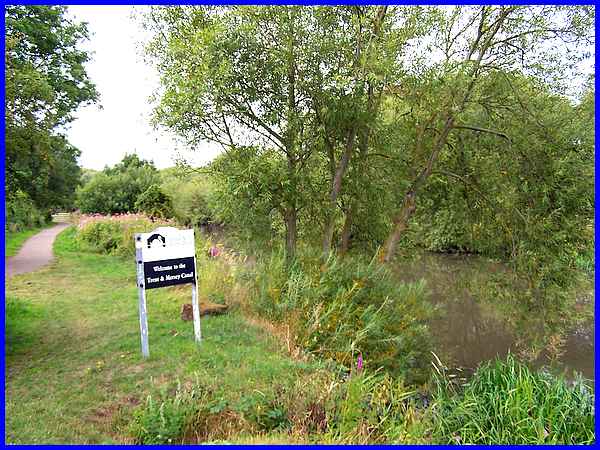
Turning through another 90 degrees we began our walk back along
the towpath passing the "Welcome to the canal" sign
through what was still a mainly riverside landscape.
|

A little further on at the approach to the first lock the landscape
has a more manicured appearance of a canal with a concrete edge
and mooring posts.
|

I carefully crossed the gates at the Derwent Mouth Lock to the
other side of the canal for a closer look at marker post and
associated memorial plaque. The post indicated that Preston Brook
was 93.5 miles away.

The weather worn plaque expanded on the information on the post
as follows:
"Derwent Mouth marks the start of the Trent and Mersey
Canal which runs for 93.5 miles through Derbyshire, Staffordshire
and Cheshire to join the Bridgewater Canal at Preston Brook.
The canal including 75 locks and 5 tunnels was completed in 1777.
This milepost and plaque were donated and erected by Pat &
Jeff Clifton and the three branches of the East Midlands Region
of the Inland Waterways Association. Placed here by the Trent
and Mersey Canal Society and unveiled on Sunday the 20 January
1985 by Her Grace the Duchess of Devonshire."
|
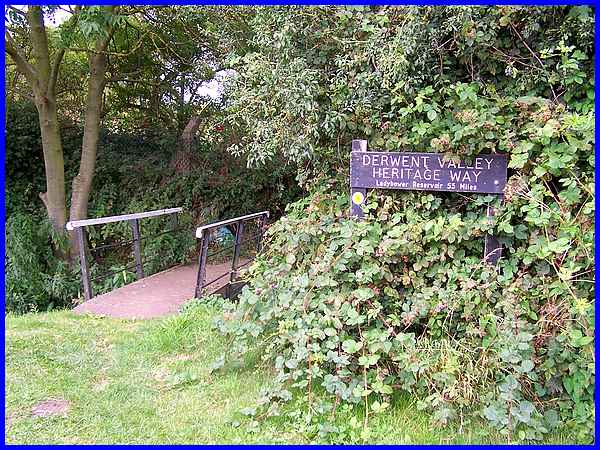
The lock also marks the start of the Derwent Valley Heritage
Way a long distance path to Ladybower Reservoir 55 miles away.
I crossed the footbridge over the overflow channel at the lock
and walked through a small willow wood to pass a pond on the
right.
|
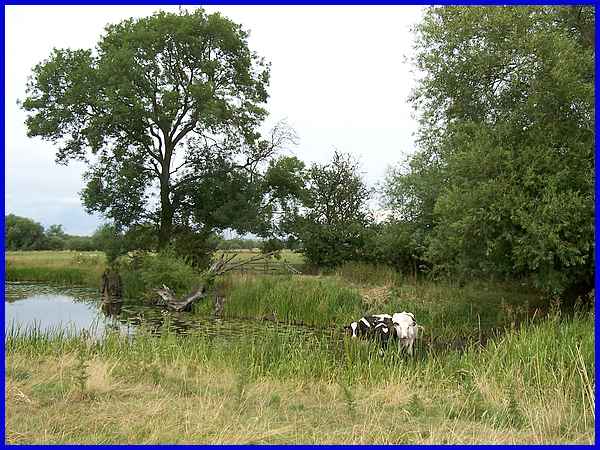
The path then passes to the right of another pond where cattle
were cooling their feet in the shallows. After this the Heritage
Way crosses a field to pick up a path alongside the River Derwent
to continue on its way north through Derby, Belper, Cromford,
Matlock and right on into the Peak District.
|
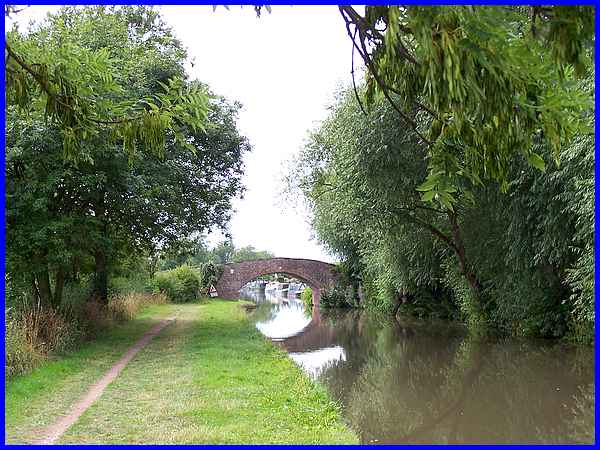
Having seen the start of the Heritage Way and walked a few steps
along it, I turned back, carefully crossed the lock gates again
to rejoin my wife and carry on along the canal towpath to Porter's
Bridge.
|
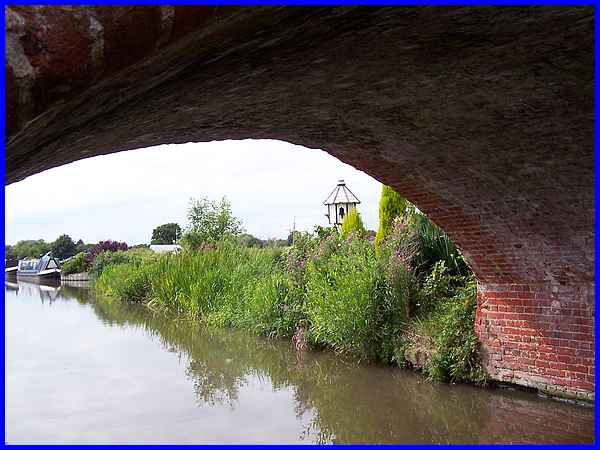
So far there had been only a couple of vessels on the canal but
from the bridge onwards there was hardly a free mooring all the
way back to Wilne Bridge. It was the small dovecote however that
caught our eye as we passed under the bridge.
|
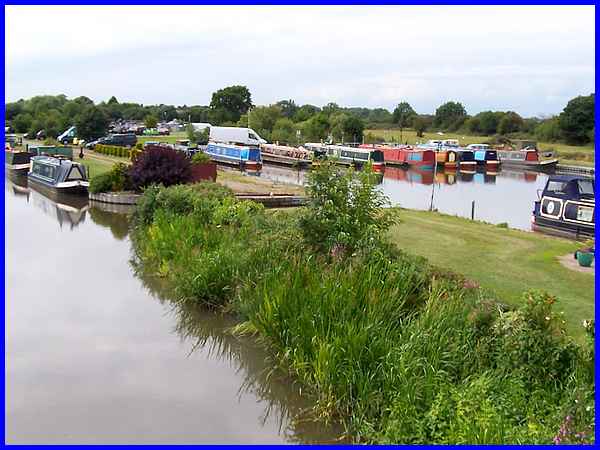
I briefly left the towpath again at the bridge to pass through
two gates and stand on the top of the bridge where there was
a good view of the smaller of two inlets that form Chapel Farm
Marina.
|

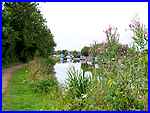 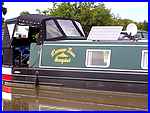 Our return now was along the boat lined towpath
(left) and even though this gentle pace of life is from another
age, many boats had TV aerials and at least one was sporting
a solar panel (right) As we neared the flood gates again we spotted
some buildings across the field we had missed on the outward
leg. These are at the tiny hamlet with the grand name of Great
Wilne. Our return now was along the boat lined towpath
(left) and even though this gentle pace of life is from another
age, many boats had TV aerials and at least one was sporting
a solar panel (right) As we neared the flood gates again we spotted
some buildings across the field we had missed on the outward
leg. These are at the tiny hamlet with the grand name of Great
Wilne.
Great Wilne is at the end of Wilne Lane out of Shardlow and is
separated from its neighbour Church Wilne that we visited in
the Draycott Village
Trail by the River Derwent. Tiny it may be but the building
with six windows visible between the narrowboats is a former
Methodist Church. Now converted into a private house it was built
in 1816 and enlarged in 1899. A Derbyshire Places of Worship
website includes some fascinating information from a time when
Great Wilne was obviously an important centre of the community.
For example, when built in 1816 it had free seating for 170 and
31"other" sittings. The congregation was approximately
24 in the morning, 40 in the afternoon and 50 in the evening
with 30 and 31 Sunday Scholars at the morning and evening classes
respectively. So perhaps the name Great Wilne is not so unusual
after all.
|

